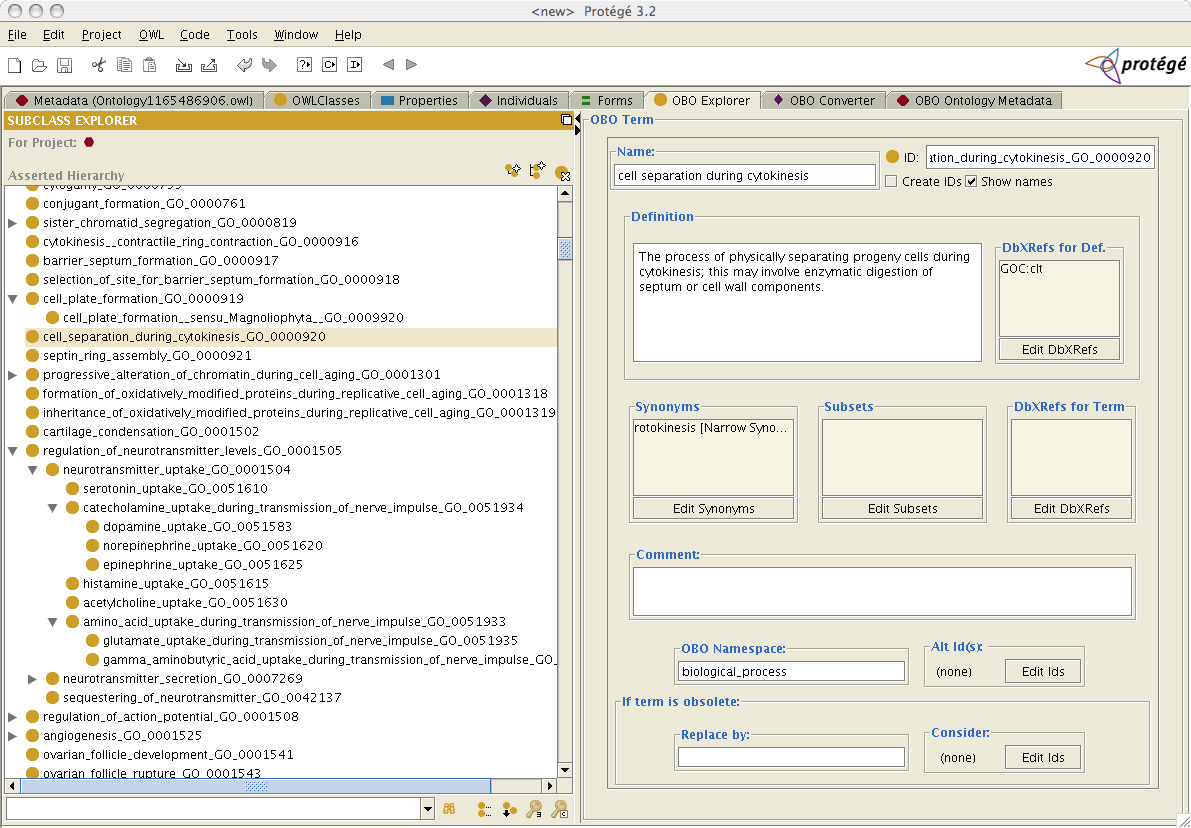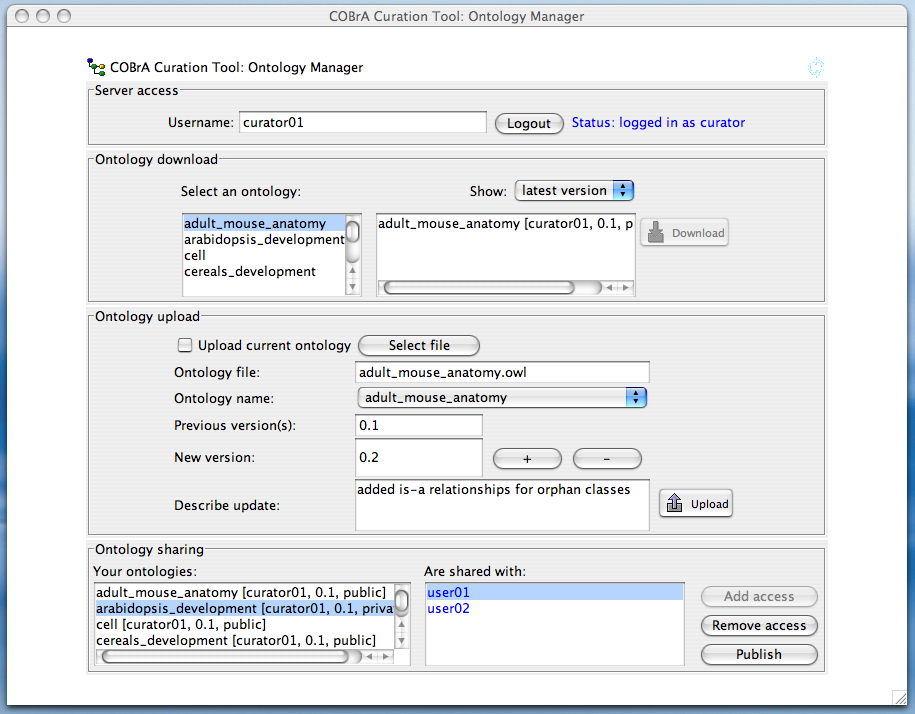Tools
The BioSphere ontology portal provides access to all the tools developed by this project. Once you have an account, and have logged in, you will have access to help pages to guide you through the user interface. Here we describe the versioning and curation model that is implemented:
- Managing Ontologies
- The Ontology Manager allows you to request access to edit and curate ontologies, this is done through the Access Rights panel;
- Access is granted by other users, namely, those who already have edit or curate access already, this is done through the Community Organizer panel;
- You require edit access in order to comment on an ontology;
- Working with Versions
- The Ontology File Manager lets you check-out a new version of the ontology for editing/commenting on, these are your active ontologies;
- This current active version will be editable only by you, but will be visible to other users who will be able to discuss it;
- Likewise, you can view and discuss other users' ontology versions (but you must first make the ontology active);
- The comments made about a term are immediately seen by all users, irrespective of the version of the ontology (or user view) they have chosen;
- One the first occasion you check-out an ontology an edit request will be made to the community and you will have to wait for permission to be given before being able to edit;
- However, when your account is activated you will likely be given access to one or more ontologies to accelerate this process;
- The Ontology Editor gives you access to the current version of the active ontologies;
- The Ontology Editor also allows you to check-in the current version to create a new version, on doing so the ontology will no longer be active;
- The Community Activity panel allows you to see the other users who are editing or commenting on the ontology;
- Curation
- Curators have access to the group view of the ontology;
- Each individual user's edits are made with respect to the group view. An individual user's view is based on the group's view PLUS the user's additions, MINUS the user's deletions;
- By this mechanism, changes to the group's view are inherited by each user;
- Curation is the process of amending the group view of the ontology based on the individual views of the users in the community;
- That is, the curator can consider the discussion points, and the actual changes in the definition of a term that users have proposed, and edit the core version of the ontology appropriately;
- Versions
- The database records changes and organises them into versions;
- Versions mark points that you may wish to return to, i.e. discarding subsequent edits;
- Versions are 'virtual' in the sense that all edits are stored immediately in the database;
- While we use the terminology of checking-in and checking-out versions, ontology files are not actually copied and there is no intermediate state that can be lost;
- Version numbers are assigned as ontologies are checked-in, this allows a full multi-user version history to be extracted;
- This means that your first checked-in version may turn out to be v2 or v3, rather than v1, depending on the activity ot other users;
- It only makes sense to edit the current version of an ontology, so there are no other options available through the user interface;
- Viewing and reverting to previous versions is not yet possible through the user interface, but is supported in the database annotations;
Tools developed under the previous COBrA-CT project are also maintained here
The COBrA-CT tools include two plug-ins
for the Protege Ontology Editor: the OBO Explorer and
the OBO Ontology Metadata editor tabs. These tools can be used
to create bio-ontologies and to edit the synonym and
database cross-reference data that is associated with
OBO terms. They should be used with the
OBOConverter tab that allows OBO
formatted ontologies to be converted into OWL, and OWL
bio-ontologies to be saved in OBO format.
These two Protege plug-ins implement an interface to the agreed OWL
representation for OBO. More information about the mapping from OBO to
OWL can be found on the Wiki:
http://www.bioontology.org/wiki/index.php/OboInOwl:Main_Page.
All COBrA-CT tools can be downloaded from the Downloads page.
OBO Explorer (click image to enlarge view)

The OBO tabs work as integrated components of Protege to allow the bio-informatician to work with OBO ontologies in a familiar manner, while being able to take advantage of the many other OWL tools that have been developed by the Protege community.
Version Manager (click image to enlarge view)

The version manager is a standalone Java tool that allows users to download and upload OWL ontologies to a central database. This tool manages ontology versions and records the version number, user and ontology names as well as the history of splitting and joining of versions. Users can share their ontologies will other selected users. Ontologies can be declared 'public' and so are accessible to all users. Uploading ontologies requires users to register, however, guest users can download public ontologies without registering. An eXist database running within OGSA-DAI stores ontologies as XML documents. The client tool uses the OGSA-DAI client toolkit to connect to the database via web services.